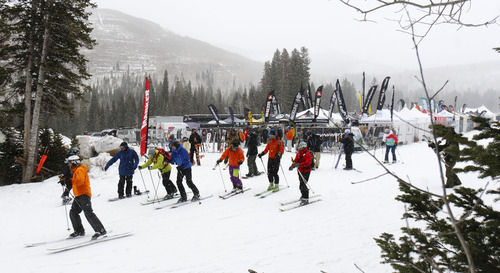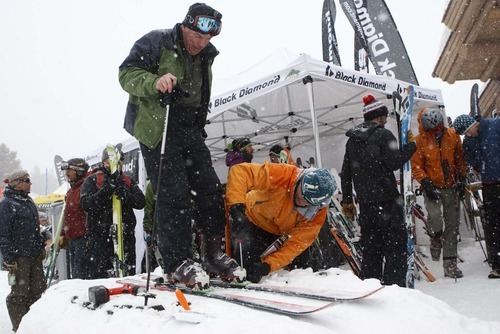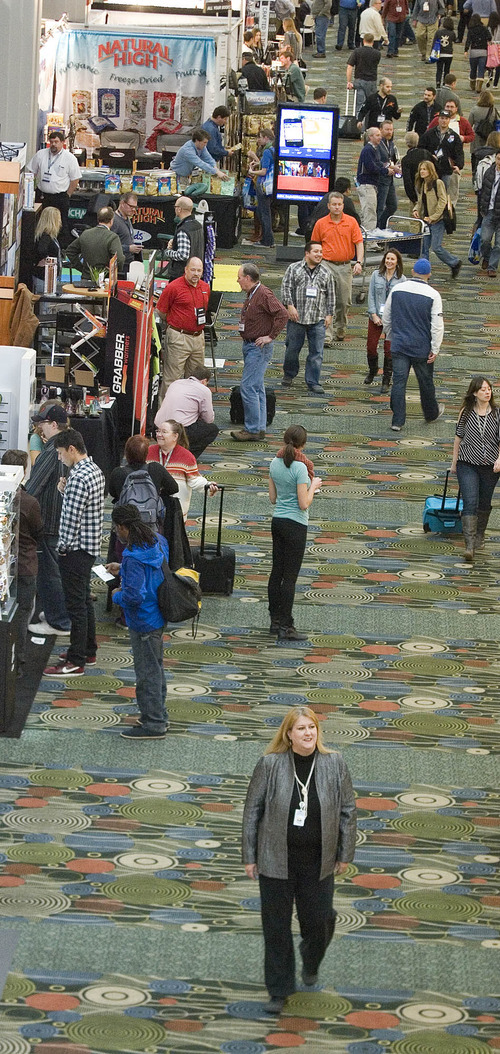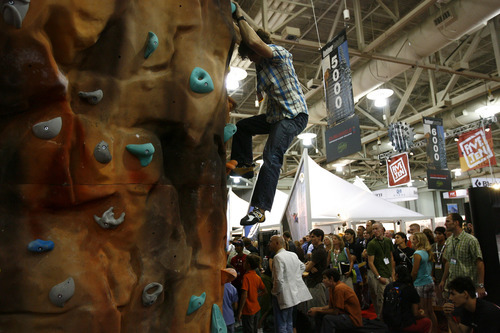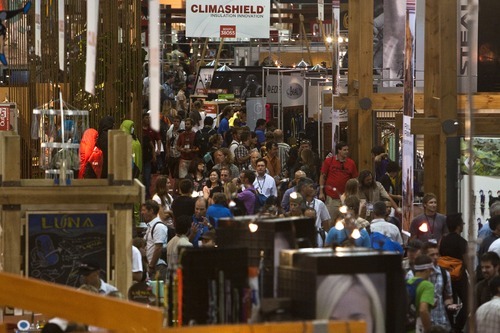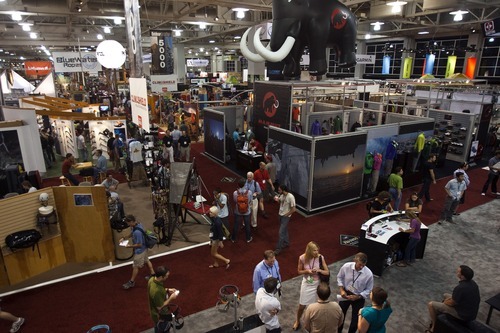This is an archived article that was published on sltrib.com in 2012, and information in the article may be outdated. It is provided only for personal research purposes and may not be reprinted.
Local officials like Salt Lake City's chances of retaining the Outdoor Retailer's winter show but acknowledge the summer version has grown so large it could be up for grabs by competing cities.
The Outdoor Retailer's contract to stage summer and winter trade shows at the Calvin L. Rampton Salt Palace Convention Center expires at the end of 2014. The combined shows generate nearly $40 million in direct economic impact to Salt Lake City and the state annually.
But it's not only size that might decide the issue. There's also the matter of adequate hotel space, logistics and politics.
There is no consensus but some involved in the trade show worry that Utah politicians' efforts to take control of federal lands and sell federal property so a gondola can link Park City and Big Cottonwood Canyon ski resorts ould be hurting Salt Lake's efforts to keep the summer showcase beyond 2014.
Salt Lake County Convention Bureau President and CEO Scott Beck, for one, says he hasn't heard about political concerns. He is optimistic about keeping both shows. He said Salt Lake City's strengths include its affordability and outdoor access. Beck also noted that about 30 percent to 40 percent of exhibit displays on the show floor are stored in the area year-round, saving exhibitors the cost of shipping items to new destinations.
But Outdoor Retailer representatives, whose not-open-to-the-public shows attract 7,100 retail attendees and connect buyers from outdoor specialty stores with 1,100 brands from around the world, have said the summer event is too large for available space. Structures must be erected outside the Salt Palace to accommodate participants.
The overcrowding has made adding new vendors problematic.
Salt Lake County officials have proposed using both the Salt Palace and Sandy's South Towne Exposition Center during the summer market. That would add 243,000 square feet of contiguous space to the show. The biggest hurdle to that idea is that show organizers aren't keen about having venues 15 miles apart.
Beck said Salt Lake City's biggest disadvantage is the lack of a convention hotel and of convention-quality rooms within a two-mile radius of the Salt Palace.
"We have heard that there are many participants who stay in Utah, Davis and Summit counties," he said. "People would rather be closer to the convention."
On the other hand, Beck and others said there's a possibility that the winter and summer shows could be staged in two different cities.
"You cannot find [elsewhere] the immediacy of the quality of outdoor access to the winter experience in Salt Lake City," he said. "Summer is different. It needs water — and we are not the only destination that has great access to water."
Show manager Kenji Haroutunian said Friday that although the shows could be split, such a move could undermine the trade groups' power to negotiate prices for hotel rooms and other needed services.
Outdoor Retailer and the Outdoor Industry Association are asking stakeholders to rate convention centers nationally as the trade groups decide where future shows will be staged. Other sites under consideration are in Las Vegas, Denver, Anaheim, Calif., and Orlando, Fla. Results could be released in the next several months.
But at least one key industry player thinks other considerations are entering the debate.
Peter Metcalf, president of Utah-based outdoor company Black Diamond, said in an email that although the debate over lack of space for the growing summer show is not new, what has changed in the view of some outdoor industry leaders is the perception that they don't have a place at the table with Utah politicians.
He cited concerns over issues such as litigation that would give the state more control over federal public lands, lawsuits involving 40,000 miles of backroad claims and Utah's congressional delegation sponsoring a bill favoring the sale of more than 30 acres of federal lands to The Canyons Ski Area for a gondola to the Solitude ski area. In addition, state lawmakers have restricted access of anglers to stream beads on private property in Utah.
The Black Diamond leader said that although many in the industry believed they had influence with former Utah governors Mike Leavitt, Olene Walker and especially Jon Huntsman Jr. in the past, some of Utah's political leaders have shown an unwillingness to engage the industry's leadership.
"I am not saying that was the opinion of all, but what I am saying is that the state's action knocked Utah out of being a favored venue for big-picture reasons to just another venue to be analyzed very objectively against the other four or five locations that can host the show," Metcalf said.
Gov. Gary Herbert's spokeswoman, Ally Isom, said Friday that some in the trade association are using the group "to misrepresent fact for personal agendas." The group has publicly stated its primary issue "is adequate exhibit and hotel space, not policy disagreements." The state and others are investing in outdoor tents to accommodate the show, "while we explore permanent solutions."
Isom also said a lawsuit over federal laws "is not requisite, but as we carefully explore the concept, there should be no doubt that the governor absolutely plans to keep public lands public and accessible." She added Herbert has not taken a position on the SkiLink proposal, "although he agrees on the concept of an interconnector."
Show manager Haroutunian said land policies are important because the fortunes of the outdoor industry rest on clean and open spaces, wilderness and recreational areas that are part of the public domain, such as hiking trails, climbing areas and open access to fishing and hunting.
"How important is the cultural fit? It doesn't have to be a hard measure that goes into a final decision, but helps creates the vibes," he said. "The cultural landscape of Salt Lake City and Utah does affect the show. The cultural fit includes the political environment and intangibles, and right now, it's a big question mark. How this lines up when considering many trade-offs is something we'll be addressing That's why we'll be looking at a collective voice." —
Outdoor Retailer winter, summer shows
Events • Staged at the Salt Palace convention center, attracting 21,000 visitors during winter show and 25,000 for the summer show.
Purpose • Connect buyers from outdoor specialty stores with more than 900 manufacturers worldwide.
Revenue • Each show generates nearly $20 million for the Salt Lake City and state economies.
Survey • Stakeholders' responses will help determine location of future shows, at http://www.outdoorretailer.com/collective-voice.




